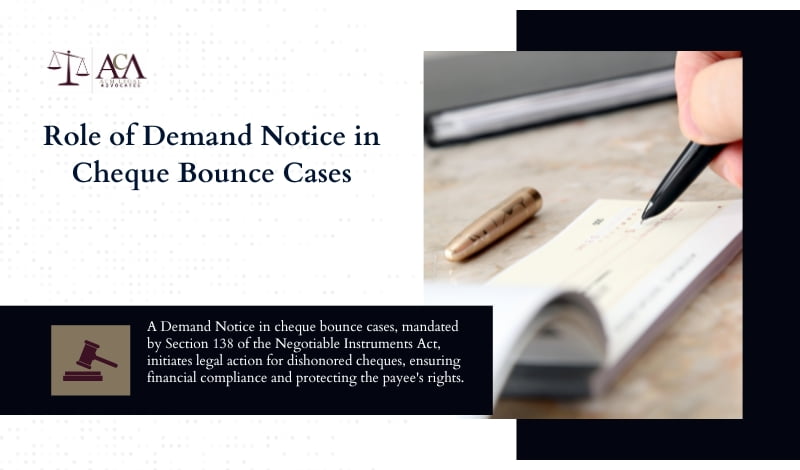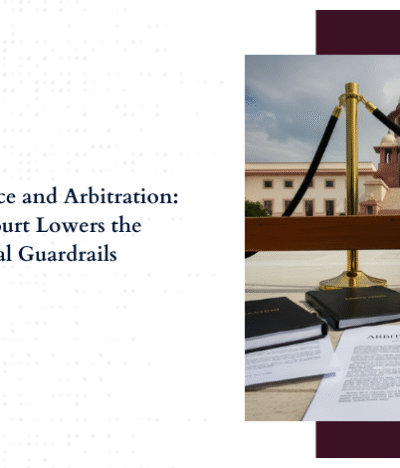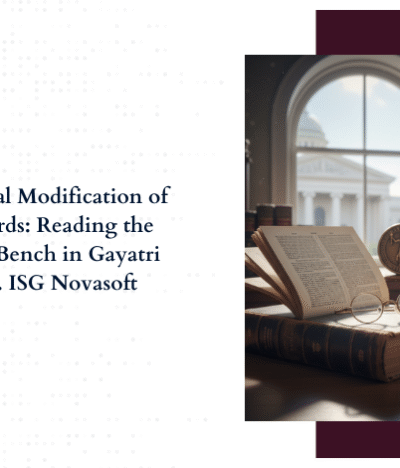Is a Demand notice mandatory in a cheque bounce case? Demand Notice in Cheque Bounce Cases plays a crucial role in addressing such issues within the legal framework. With financial transactions increasingly relying on cheques, incidents of cheque bounce have become more common, necessitating a structured legal response. Understanding the cheque bounce case process under Section 138 of the Negotiable Instruments Act 1881, is essential for safeguarding financial interests and ensuring compliance. As of 2024, India has nearly one crore 10 million cheque bouncing cases pending across its judicial system.
Section 138 of the Negotiable Instruments Act, 1881, deals with the dishonour of a cheque for insufficiency of funds in the account or due to it being exceeded. The aim of this Section is to provide a legal framework that ensures the credibility and reliability of negotiable instruments like cheques. It seeks to deter dishonourable practices by imposing legal consequences on those who issue cheques without sufficient funds or fail to honour their financial commitments, thereby protecting the interests of payees and promoting financial discipline.Section 138 cheque bounce initiates a legal process that can result in criminal charges
Understanding Demand Notices
Demand notice in a cheque bounce case is a formal written communication sent by the payee (the recipient of the bounced cheque) to the drawer (the issuer of the cheque). It informs the drawer that the cheque issued by them has been dishonoured by the bank due to insufficient funds or other reasons. The notice demands payment of the cheque amount within a specified period, typically 15 days. It serves as a precursor to legal action if the payment is not made within the stipulated time frame. Its purpose is to inform the drawer of the dishonoured cheque and to provide an opportunity to settle the amount before legal action is taken. The notice must be issued within 30 days of receiving the dishonour memo from the bank.
Kusum Ingots & Alloys Ltd. vs. Pennar Peterson Securities Ltd. (2000) – The Supreme Court of India held that a cheque issued as a gift or for any other purpose which does not constitute a legally enforceable debt or liability will not attract the provisions of Section 138 of Negotiable Instrument Act,1881
Legal Requirements for Drafting a Demand Notice
When drafting a Demand Notice in Cheque Bounce Cases, it is crucial to ensure that the notice is comprehensive and legally compliant. This notice serves as a formal communication to the drawer, indicating that their cheque has bounced and demanding payment. Here are the essential elements that must be included in such a notice:
I. Details of Parties
Clearly mention the name and address of both the drawer (the person who issued the cheque) and the payee (the person to whom the cheque was issued). This ensures that the notice is correctly addressed and reaches the intended recipient.
II. Details of the Cheque
Include specific details about the cheque such as the cheque number, date of issuance, the bank on which it was drawn and the amount. These details help in identifying the exact transaction in question.
III. Reason for Dishonour
State the date on which the cheque was dishonoured and the reason provided by the bank. Common reasons include insufficient funds, a mismatch of signature or a stop payment instruction.
IV. Demand for Payment
Explicitly demand that the drawer makes the payment of the cheque amount within 15 days of receiving the notice. This period is mandated by law under Section 138 of the Negotiable Instruments Act.
V. Consequences of Non-Payment
Mention the legal consequences of failing to make the payment within the stipulated time. Inform the drawer that non-compliance will lead to legal action under 138 cheque bounce provisions, which can result in severe penalties including imprisonment and fines.
VI. Date and Signature
Include the date on which the notice was drafted and the signature of the payee or their authorized representative. This adds authenticity and a formal touch to the document.
Serving the Demand Notice
Serving a Demand Notice in Cheque Bounce Cases involves a detailed and precise procedure to ensure legal compliance and effectiveness. Here is a step-by-step guide to serving such a notice:
- Identify the Dishonour of Cheque: The first step in a cheque bounce case is identifying that the cheque has been dishonoured. The bank will issue a “Cheque Return Memo” stating the reason for dishonour, such as insufficient funds or a mismatch of signatures.
- Draft the Demand Notice: The payee or their legal representative must draft the demand notice. This notice must include the following key elements:
- Details of Parties
- Details of the Cheque
- Reason for Dishonor
- Demand for Payment
- Consequences of Non-Payment
- Date and Signature.
- Send the Demand Notice: The demand notice must be sent to the drawer within 30 days of receiving the information about the cheque bounce from the bank. Keeping a copy of the notice and the receipt from the postal service is crucial for future legal proceedings.
- Waiting Period for Response: Upon receiving the demand notice, the drawer has 15 days to respond and make the payment.
- Non-Compliance and Legal Action: If the drawer fails to make the payment within 15 days, the payee can proceed to file a complaint in the appropriate court. The complaint must be filed within 30 days from the expiry of the 15-day period given in the demand notice.
- Filing a Complaint in Court: The complaint is filed before the court. The payee must provide all relevant documents, including the original bounced cheque, the cheque return memo, the copy of the demand notice and proof of its delivery. The court will issue a summons to the drawer to appear before the court. If the drawer fails to appear, the court may issue a bailable or non-bailable warrant, depending on the circumstances.
- Court Proceedings: The court will examine the evidence and hear both parties. If found guilty, the drawer can face a bounce cheque penalty that may include imprisonment for up to two years, a fine that may extend to twice the amount of the cheque, or both.
Legal Consequences of Non-Compliance
The legal consequences of non-compliance with the provisions related to cheque bounce under the Negotiable Instruments Act, 1881, can be summarized as follows:
- Criminal Liability: The issuer of a bounced cheque can be prosecuted under Section 138 of NI Act. This includes imprisonment for up to two years or a fine that may extend to twice the amount of the cheque, or both.
- Non-Payment After Notice: If the drawer fails to make the payment within 15 days of receiving the Demand Notice in Cheque Bounce Cases, the payee can file a complaint in the appropriate court within 30 days.
- Court Proceedings: In the case of a cheque bounce, the court will issue summons to the drawer. Failure to appear in court may result in a bailable or non-bailable warrant, depending on the circumstances.
- Possible Defences: The drawer can present defences like the cheque was not issued for a debt, there was no legal liability or other valid reasons as per the law.
- Civil Liability: In addition to criminal prosecution, the payee can also file a civil suit for the recovery of the cheque amount, which can lead to a decree of the amount along with interest and legal costs.
- Additional Fines: Courts may impose additional fines and penalties based on the severity and frequency of the offence.
Ajitsinh Chehuji Rathod Vs. State Of Gujarat & Anr. 2024 :- The Supreme Court held that the burden of proof regarding the genuineness of signatures on a dishonoured cheque lies with the accused. It affirmed that the court cannot assist the accused in collecting evidence and emphasized that the accused must lead appropriate defence evidence to challenge such presumptions effectively. The Court dismissed the appeal, finding no grounds to interfere with the lower court’s conviction under Section 138 of the Negotiable Instruments Act, 1881.
Role of Legal Professionals
Seeking legal advice for drafting and serving demand notices in cheque bounce cases is crucial. Cheque bounce lawyers can navigate the legal complexities and ensure compliance with statutory requirements. Choosing the right legal representation can make a significant difference in the cases of cheque bounce.
Cheque bounce lawyers can help with Legal Compliance, Clarity, Strategic Approach, documentation and Representation and help in avoiding bounce cheque penalty. Overall, cheque bounce lawyers play a pivotal role in safeguarding their client’s interests and ensuring that the demand notice serves its intended purpose effectively within the legal framework.
Conclusion
In conclusion, a Demand Notice in Cheque Bounce Cases is a crucial legal instrument that initiates the process under Section 138 of the Negotiable Instruments Act, 1881. It ensures that the drawer is formally informed about the dishonour of the cheque and given an opportunity to make the payment before legal action is taken. Proper drafting and timely serving of this notice are essential to uphold the integrity of financial transactions and to protect the payee’s rights.
Ignoring this step can lead to severe legal repercussions, including criminal prosecution and a bounce cheque penalty. Seeking the expertise of cheque bounce lawyers is advisable to navigate the legal complexities, ensure compliance with statutory requirements and effectively manage the case of cheque bounce.
Trust ACM Legal for Expert Handling of Demand Notice in Cheque Bounce Cases
For expert guidance in handling Demand Notices in Cheque Bounce Cases, consult ACM Legal today. Our cheque bounce lawyers specialize in managing every aspect of a cheque bounce case, from drafting demand notices to navigating the intricacies of Section 138 cheque bounce legal proceedings. ACM Legal ensures that your case is handled with the utmost professionalism, minimizing the risk of a bounce cheque penalty and safeguarding your financial interests.
FAQs
1. What are the essential elements required in a demand notice for a cheque bounce case?
The essential elements in demand notice in cheque bounce cases include the name and address of the drawer and payee, details of the cheque, date of dishonour, reason for dishonour, demand for payment within 15 days and consequences of non-payment. Along with the date on which the demand notice was drafted with a signature to provide authenticity is also one the essential elements in cheque bounce cases.
2. What is the legal timeframe for issuing a demand notice after a cheque bounces?
In the case of a cheque bounce, according to Section 138 of the Negotiable Instruments Act, 1881, the payee must issue a demand notice to the drawer within 30 days of receiving the information about the dishonoured cheque. This notice should inform the drawer of the bounced cheque penalty and demand the payment of the amount within 15 days from the date of receipt of the notice. If the drawer fails to make the payment within this period, the payee can file a complaint in court within one month of the expiry of the notice period. Section 138 cheque bounce provisions are designed to ensure financial discipline and penalize dishonoured cheques.
3. How should a demand notice be served to ensure legal compliance?
The notice can be served through registered post, email or courier, with proof of delivery maintained for legal proceedings. It is important to maintain proof of delivery of the notice. This can include the acknowledgment receipt (in case of registered post or courier) or a signed acknowledgment by the recipient if delivered in person and a screenshot in case service has been made through electronic methods such as e-mail.
4. What are the legal consequences if the drawer fails to comply with a demand notice within the stipulated period?
Failing to comply with a demand notice within the stipulated period can lead to significant legal consequences for the drawer of the bounced cheque. The payee can initiate legal action against the drawer, typically by filing a complaint or case in the appropriate court. This failure can result in criminal liability for the drawer, potentially leading to imprisonment or a monetary penalty upon conviction. Moreover, the drawer may be held responsible for paying the legal expenses incurred by the payee in pursuing legal action. Therefore, understanding and adhering to legal obligations is crucial to avoid bounce cheque penalties and mitigate these legal and financial risks effectively.
5. Can a demand notice be sent via email, and what proof of delivery is necessary for legal proceedings?
Yes, a demand notice can be sent via email, but proof of delivery, such as email confirmation, is necessary for legal compliance. Proof of delivery can include a delivery receipt from the sender’s email server, read receipts if acknowledged by the recipient, or printouts/screenshots of the sent email and any receipts obtained. It’s essential to include all required details in the email, such as specifics of the bounced cheque(s), the amount owed and a clear demand for payment within a specified timeframe.






